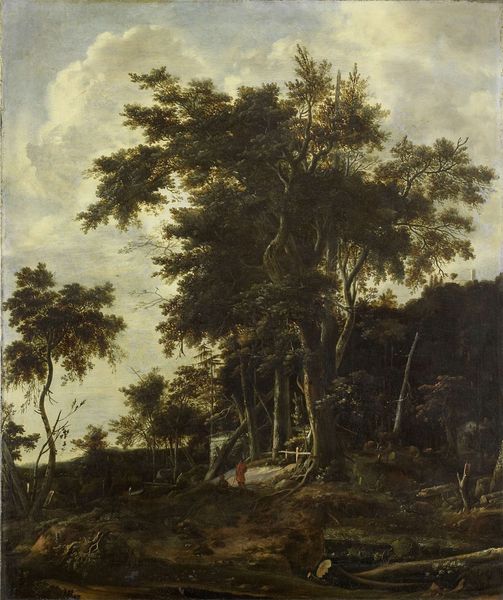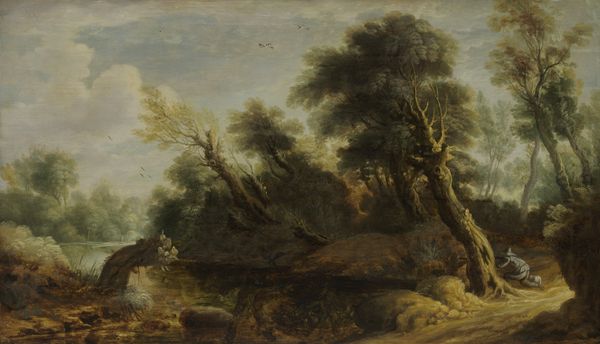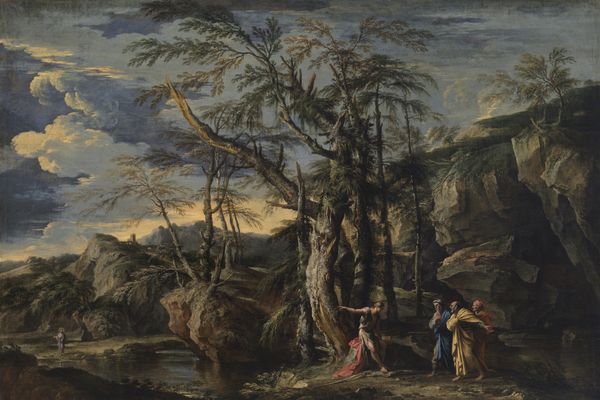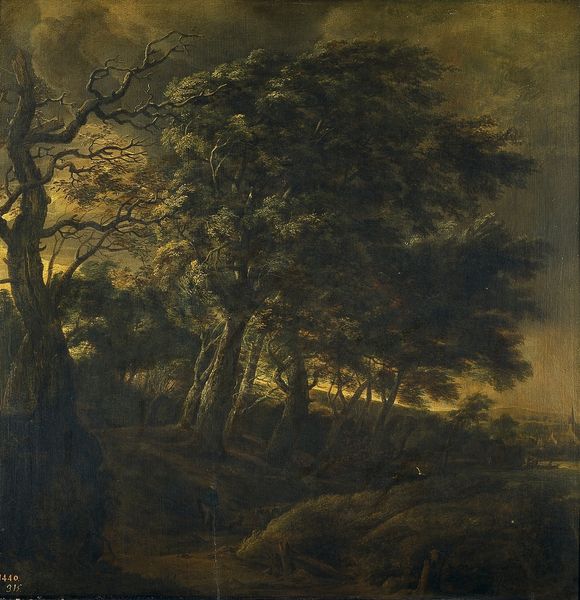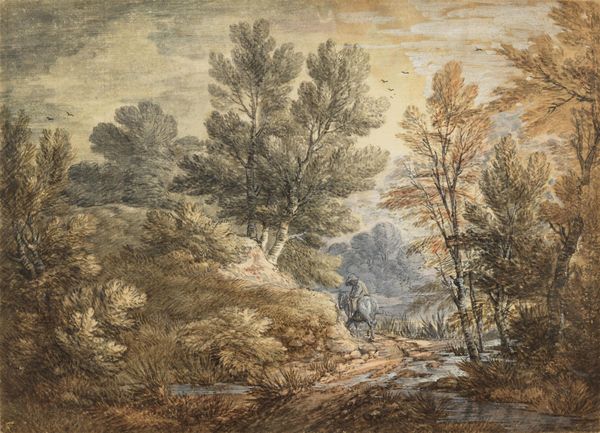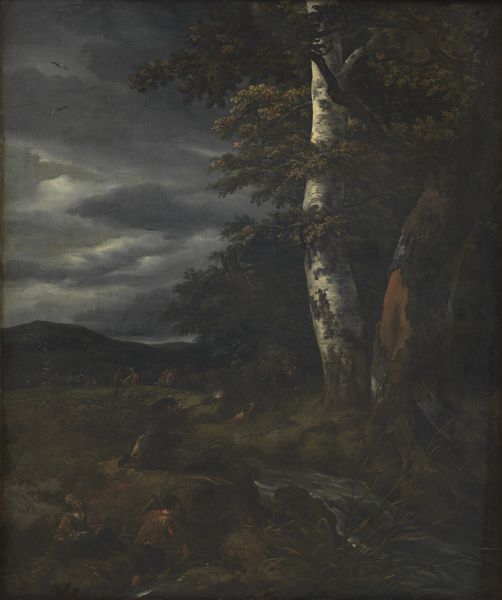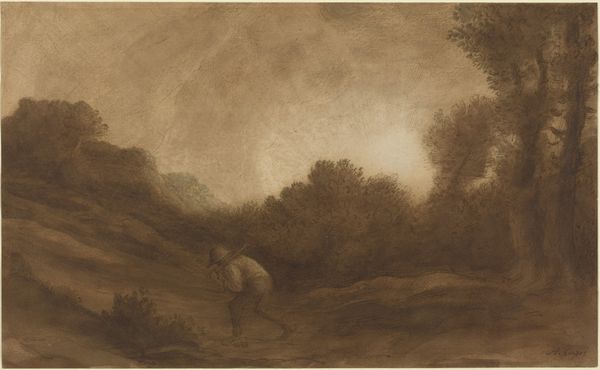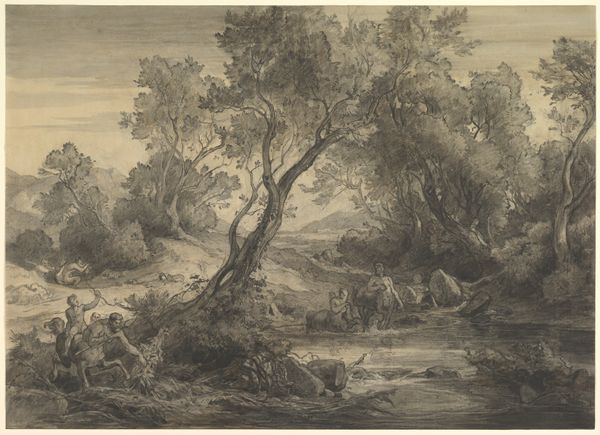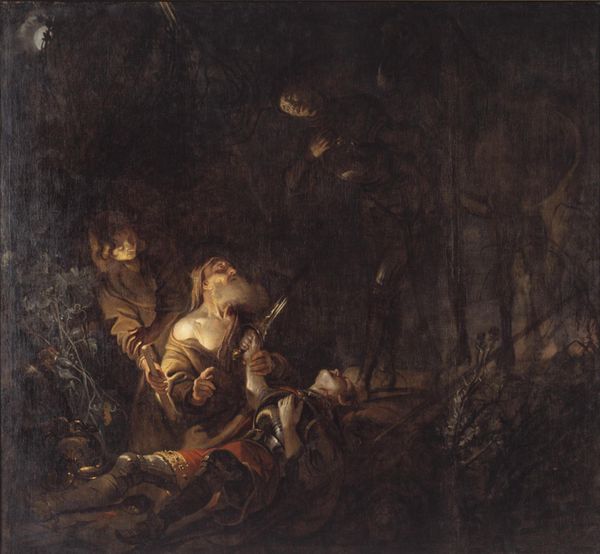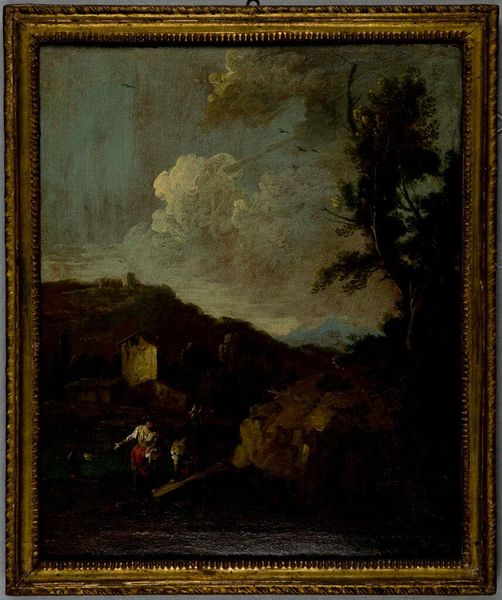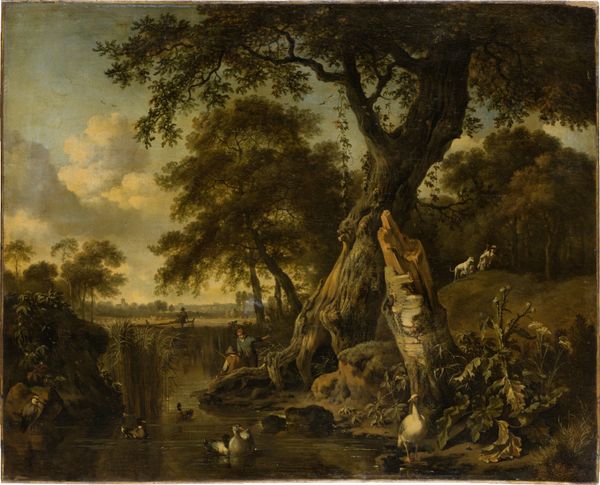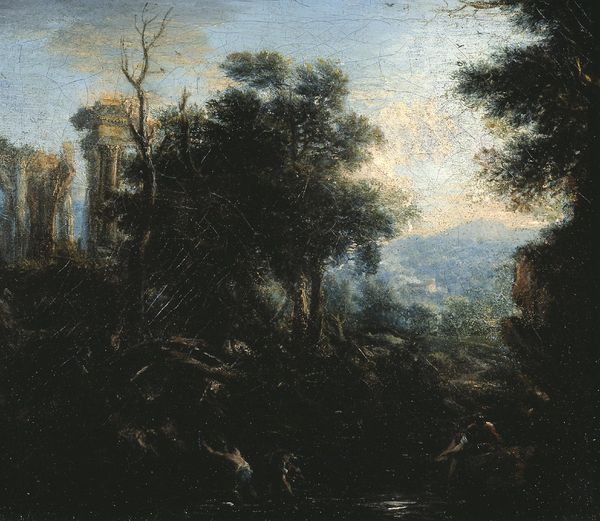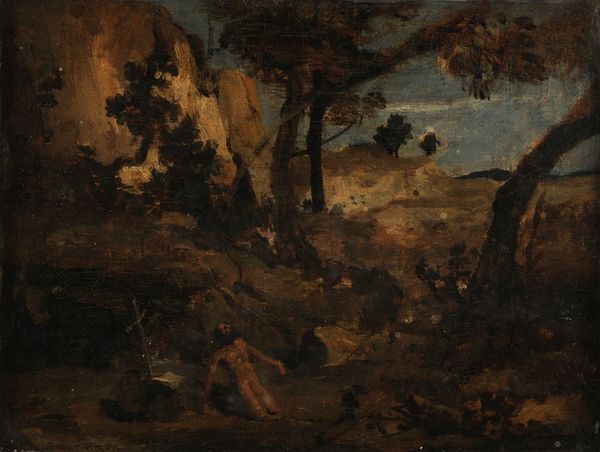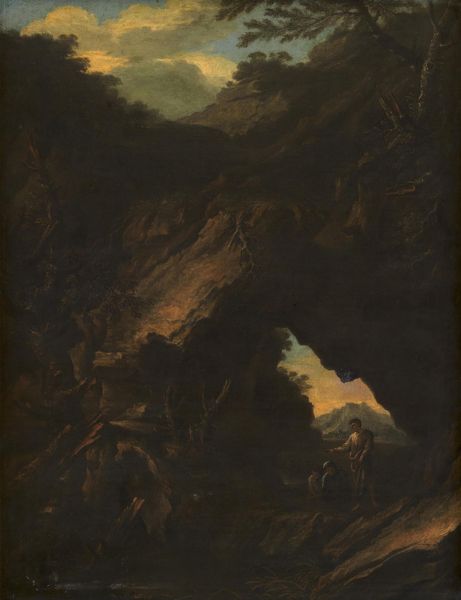
painting, oil-paint
#
baroque
#
painting
#
oil-paint
#
landscape
#
figuration
#
oil painting
Dimensions: height 99.3 cm, width 75.1 cm, thickness 3.8 cm, depth 5.2 cm
Copyright: Rijks Museum: Open Domain
Editor: This is Alessandro Magnasco’s oil painting, "Carthusian Monks in a Landscape," dating to the first half of the 18th century. I find it kind of gloomy, the figures seem lost amidst this dark landscape. What draws your attention when you look at this piece? Curator: What immediately strikes me is Magnasco’s theatricality. Think about the Carthusian order: known for their solitude, their almost radical withdrawal from society. Magnasco's painting presents a constructed version of this piety for public consumption. Editor: Constructed how? Curator: Well, consider the art market of the time. Images of religious devotion were popular, providing wealthy patrons a safe way to demonstrate virtue. The dramatic lighting, the expressive, almost caricatured figures… it all amplifies the emotional intensity for a viewing audience. Does that resonate with what you initially perceived as gloom? Editor: It does, now that you mention it. It feels less like simple sadness and more like a performance of piety. So, the artist is shaping an image of monastic life to be palatable to those *outside* that life? Curator: Precisely. This painting tells us less about the actual lives of Carthusian monks, and more about the societal expectations and the commodification of religious experience during the Baroque period. Consider also where a piece like this might have been displayed. Probably in a private collection, furthering the patron's reputation. Editor: That’s a totally different way to consider the work, focusing on who it’s really *for*. I guess I was so focused on the "mood" of the image, I didn't consider the economic and social factors at play. Curator: And that’s why considering art historically allows us to decode not just *what* we see, but *why* it was made to be seen that way. It shifts our focus from a purely aesthetic judgment to a critical understanding of its place in a specific historical context.
Comments
No comments
Be the first to comment and join the conversation on the ultimate creative platform.
